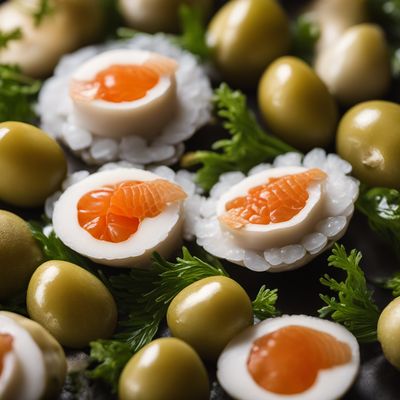
Ingredient
Weakfishes
The Delicate Delights of Weakfish: Exploring the Subtle Flavors of This Ocean Gem
Weakfish is a species of fish found in the coastal waters of North America. It has a slender body with a silvery-gray coloration and a distinctive dark spot near its tail. The flesh of weakfish is tender and flaky, with a mild and slightly sweet flavor. Its texture is delicate, making it perfect for various cooking methods such as grilling, baking, or pan-searing. When cooked, the flesh turns white and easily flakes apart, making it a delight to eat.
Origins and history
Weakfish has a rich history in North American culinary traditions. Native Americans and early European settlers relied on weakfish as a staple food source. It was highly valued for its abundance and delicious taste. Over the years, weakfish has become an important commercial and recreational fishery, with regulations in place to ensure sustainable harvesting.
Nutritional information
Weakfish is a nutritious choice, providing a good source of lean protein, omega-3 fatty acids, and essential minerals such as selenium and phosphorus. A 3-ounce serving of cooked weakfish contains approximately 100 calories and is low in saturated fat.
Allergens
Weakfish is a type of fish and may pose a risk of allergenic reactions in individuals with fish allergies.
How to select
When selecting weakfish, look for fish with clear, bright eyes, shiny skin, and a fresh, mild aroma. The flesh should be firm to the touch and have a vibrant color. Avoid fish with dull or discolored skin, a strong fishy odor, or signs of sliminess.
Storage recommendations
To maintain the freshness and quality of weakfish, it is best to store it in the refrigerator. Wrap the fish in moisture-proof paper or place it in an airtight container to prevent odor transfer. Consume within 1-2 days of purchase for optimal flavor and texture.
How to produce
Weakfish is typically caught in the wild by commercial or recreational fishermen. It is not commonly raised or produced through aquaculture.
Preparation tips
Weakfish can be prepared in various ways, including grilling, baking, broiling, or pan-searing. To enhance its delicate flavor, consider marinating the fish in citrus juices or a light herb-infused marinade before cooking. Avoid overcooking weakfish, as it can become dry and lose its tenderness. Serve with fresh herbs, lemon wedges, or a light sauce to complement its subtle flavors.
Substitutions
If weakfish is not available, you can substitute it with other mild-flavored white fish such as flounder, sole, or snapper.
Culinary uses
Weakfish is a versatile ingredient that can be used in various culinary applications. It can be grilled and served with a squeeze of lemon, baked with herbs and butter, or pan-seared and served over a bed of sautéed vegetables. It is also commonly used in fish stews, seafood soups, or as a filling for fish tacos or sandwiches.
Availability
Weakfish is commonly found in the coastal regions of North America, particularly along the Atlantic coast from Maine to Florida.
More ingredients from this category » Browse all

Drums
The Rhythm of Drums

Dentex
The King of the Mediterranean: Discovering Dentex

Yellow croaker
The Golden Catch

Japanese seabass
The Delicate Beauty of Japanese Seabass

Threadfins
The Silky Swimmers of the Ocean

Sea bream
Delicate Ocean Gem

Large yellow croaker
Golden Delicacy from the Sea

Mullets
The Versatile Mullet

Lizardfishes
The Versatile Delicacy from the Sea

Groupers
The Mighty Groupers: A Seafood Delicacy

Lesser sand eel
Exploring the Delicate Flavor of Lesser Sand Eel

Snappers
The Irresistible Crunch of Snappers